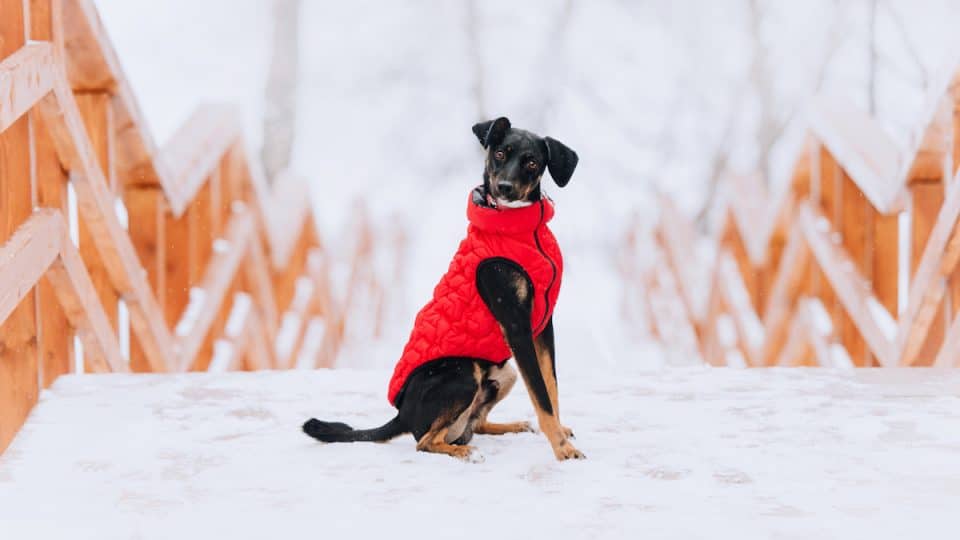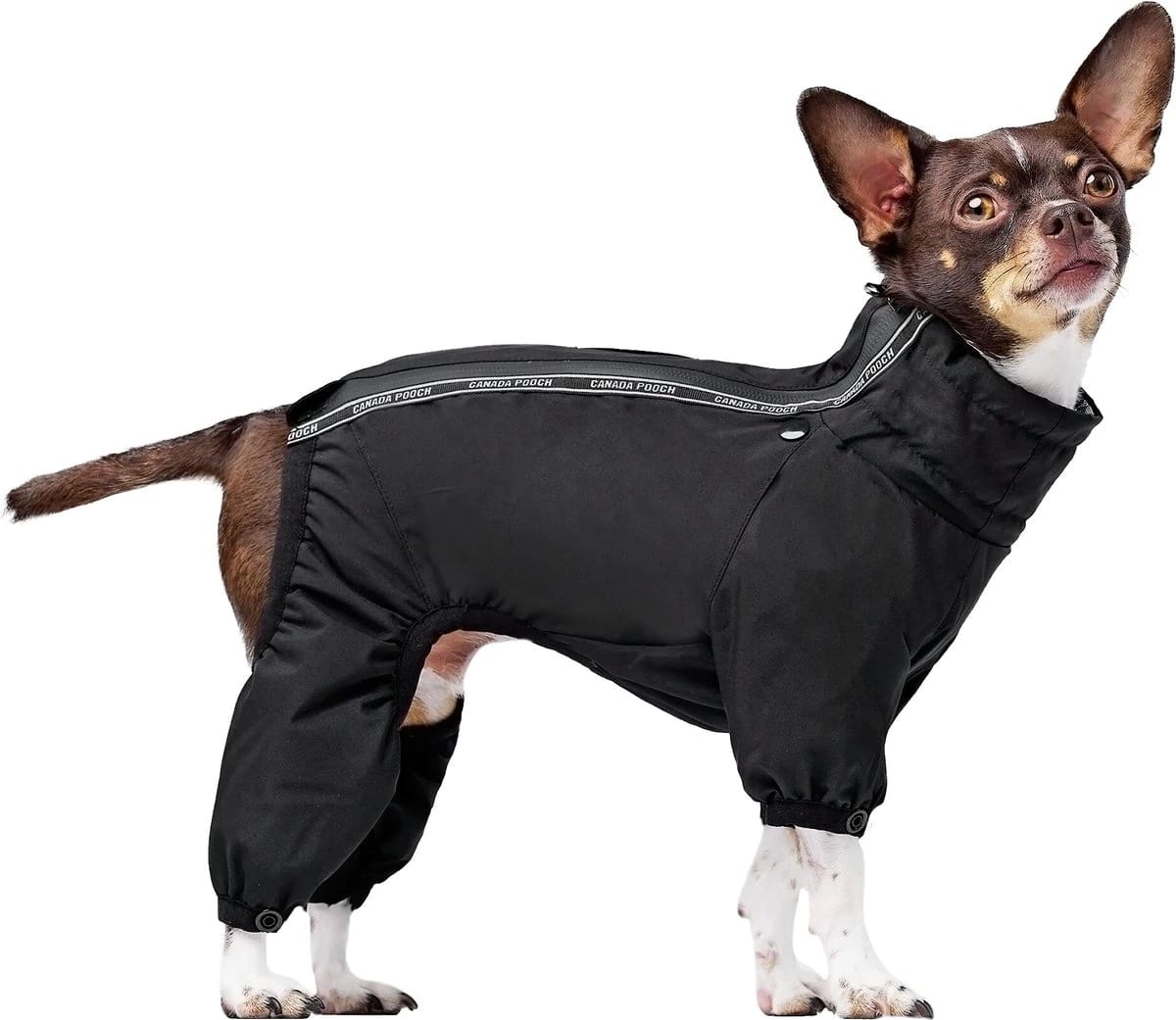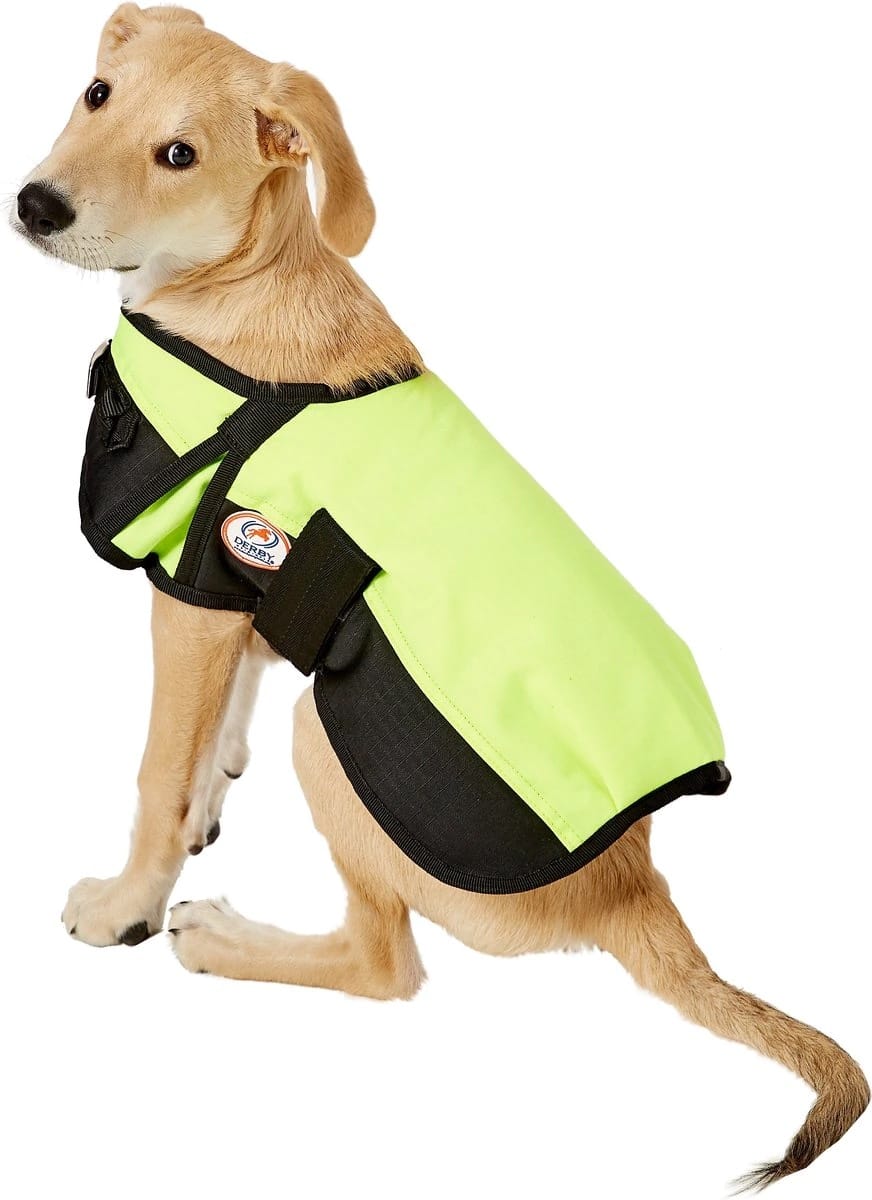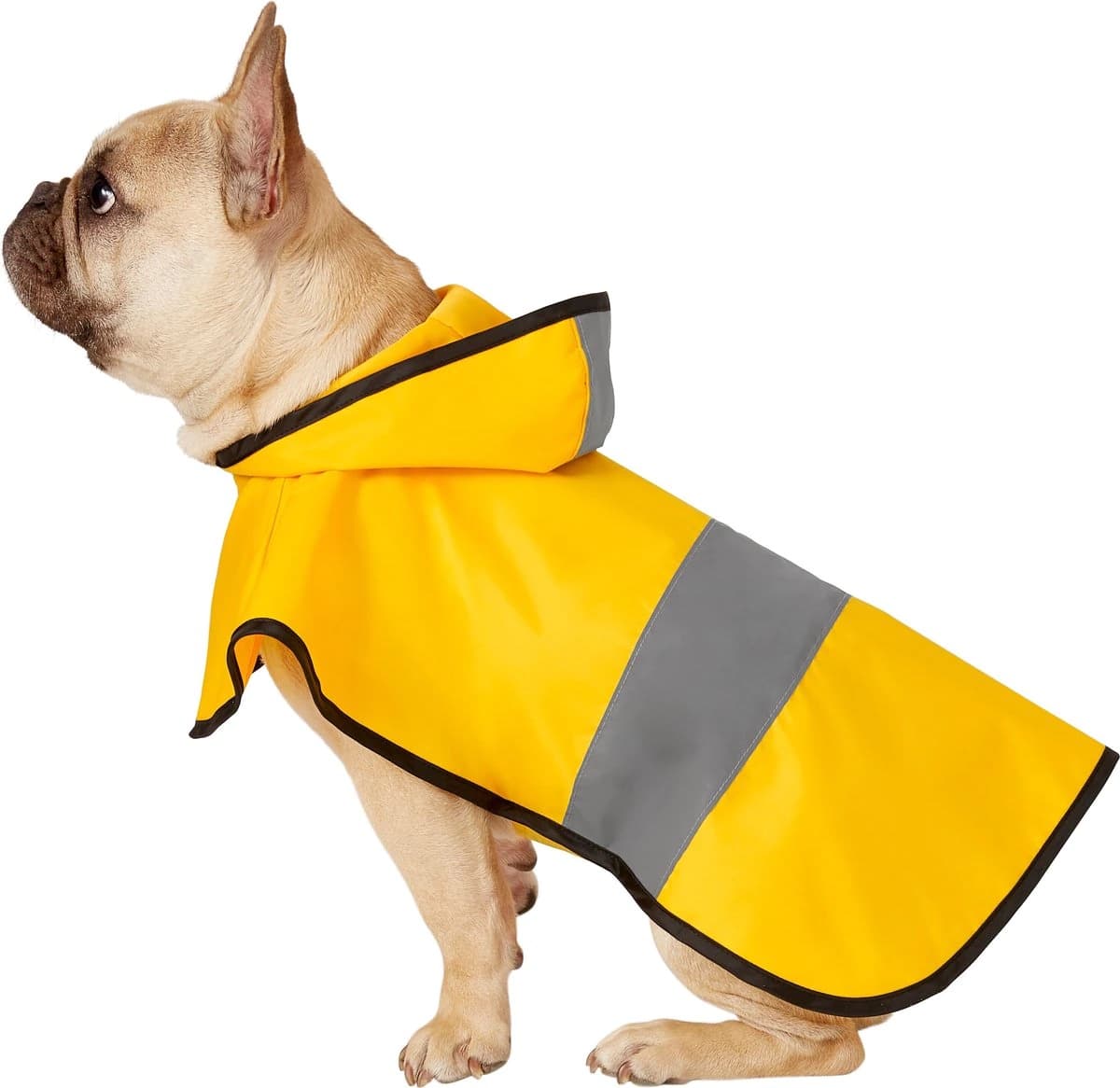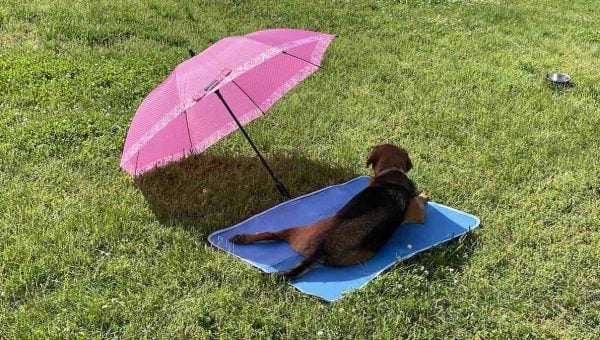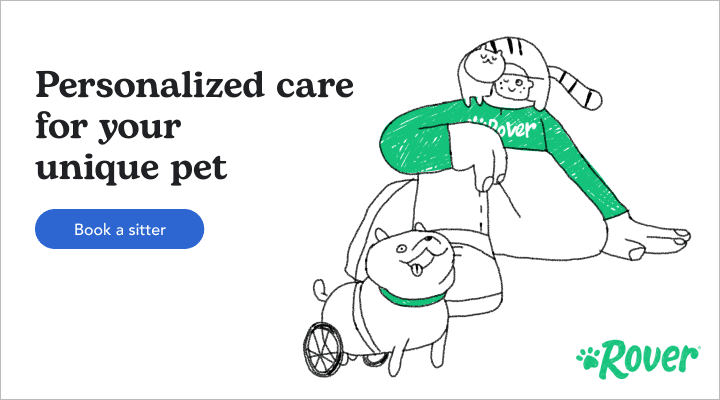- This post contains affiliate links. Read more here.
- Not a substitute for professional veterinary help.
As we plunge (willingly or otherwise) into another winter, we find ourselves pulling parkas and scarves out of storage. Which has us wondering: should we be doing the same for our dogs? This question comes up a lot with pet parents concerned about their dog’s ability to endure the cold and snow. And with our dogs’ health and comfort on the line, it’s a question we wanted to explore further.
All manner of winter dog gear is available to pet parents—but is it ever necessary? Do dogs need coats in winter? And do they mind wearing them? To find out, we dug deep into the world of seasonal dog gear, seeking professional advice from veterinarian Chyrle Bonk. Here are some helpful guidelines on winter clothing for dogs.
An Expert Explains the Benefits of Winter Clothing for Dogs—and When to Avoid Them
Dog parents tend to fall into one of two camps. Some say dogs are naturally equipped to handle whatever winter throws at them, and coats are just superfluous accessories. Others regard winter clothing as indispensable to their dog’s enjoyment of the season.
Where does a concerned (yet pragmatic) dog parent land? As it turns out: somewhere in the middle.
“Some dogs can really benefit from wearing a coat,” says Dr. Chyrle Bonk, DVM, a veterinarian at Senior Tail Waggers. “Whether or not a dog needs a coat in the winter will depend on a number of factors,” she adds.
Cold tolerance isn’t a universal dog trait, Dr. Bonk reminds us. Every pup will handle winter a little differently. As such, dog parents should make the decision to try winter clothing on a case-by-case basis—taking into account their own dog’s physique, hair length and thickness, health, and activity level.
Additionally, factors like the outside temperature, how long your dog will be out, and whether or not they’ve been acclimated to the cold are all important to consider.
“Generally, most large-breed dogs with normal to thick haircoats don’t need a coat—unless the temperatures are exceedingly cold or wet, or if they’ll be outside for long periods of time,” Dr. Bonk explains.
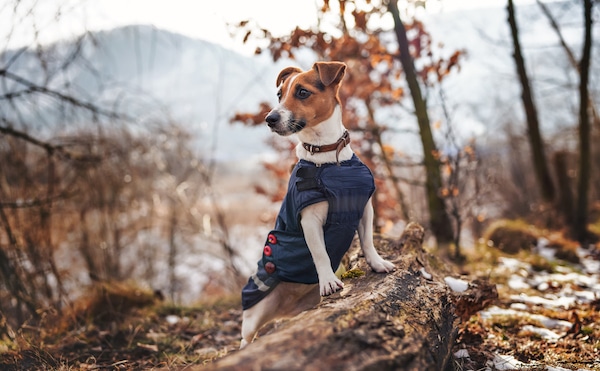
Lubo Ivanko via iStock
How can you tell if your own dog might benefit from winter clothing?
First, it’s helpful to look at their physical qualities. Small breeds or low-bodied dogs like Corgis, Dachshunds, or Basset Hounds can all benefit from a weather-resistant jacket (especially if there’s rain or snow on the ground). So can dogs with short or sparse hair, like Chihuahuas, Boxers, or Pugs. And skinny dogs without much natural “padding” (hello, Greyhounds and Whippets) might enjoy their brisk walk more with a warm layer.
Aside from their physical traits, your dog’s health and age come into play. Dogs with certain illnesses, like hypothyroidism or diabetes, may appreciate the insulation a winter coat provides. And senior dogs who struggle to maintain their body heat might find comfort in winter clothing as well.
“If you’re unsure if your dog needs a coat or not, watch them to see if they’re cold when outside,” advises Dr. Bonk. “Dogs that are cold may shiver, hunch their back, become anxious, lift their paws off the ground, or stop the activity they are doing.”
Do dogs like to wear winter clothing?
This is a bit of a mixed bag.
“Some dogs are very comfortable wearing coats, especially if they’ve been acclimated or trained to wear them,” comments Dr. Bonk.
And yet—not every dog will agree. Our pups are individuals. While some will happily don a down overcoat, others will be less enthused to do so. And since our dogs can’t speak, it’s up to pet parents to watch for clues about their preferences.
“If a dog likes wearing a coat, they will usually stand still while you put it on and go about their day normally while wearing it,” says Bonk. “They won’t chew or bite at it.”
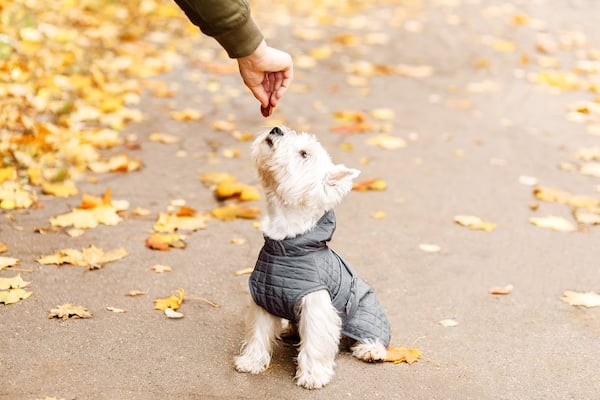
Annaartday via iStock
Conversely, a dog who dislikes wearing a coat will appear uncomfortable or even try wriggling out of it, Dr. Bonk tells us. “They may lay down and refuse to get up. Or they might slink around while the coat is on. Some will chew or bite at the coat, others may run and hide when you try to put it on.”
If your dog reacts negatively to winter clothing, don’t push the matter. (And don’t worry: we have alternative warming methods for you below.)
Four Types of Winter Dog Clothes—And Which Pups Can Benefit From Each
As a born-and-raised Buffalonian, I can appreciate fully the need for top-quality winter gear. For humans, it makes the cold bearable (fun, even!)—and it could do the same for your chilly dog. But what type of outerwear is best?
“Some coats are thicker and actually help trap warm air against the skin. Others are thinner, but help keep a dog dry or block out the chilling wind,” Dr. Bonk points out.
For the most extreme winter protection, a full-body snowsuit is your best bet. A dog snowsuit offers insulation and waterproofing from head to tail, making it a good choice for dogs who enjoy a romp in the snow. The Canada Pooch Snowsuit, for instance, features a water-resistant shell to keep your dog dry and a foil interior for better heat retention. Some dogs, however, may dislike having their legs covered.
For dogs who find sleeves restrictive, a weatherproof blanket coat allows them to move more freely. These jackets work well for fluffy, thick-coated breeds who might feel “squeezed” around the legs in a long-sleeved suit. The Derby Originals Blanket Coat is both insulated and waterproof, so it makes sense for dogs who regularly brave snow, slush, and teeth-chattering temps.
Dogs who are already well-insulated with thick fur coats, like Akitas and Saint Bernards, risk overheating in a heavy winter coat. In these cases, waterproofing your pooch might take priority over keeping them warm. The Backcountry Rain Jacket is a lighter-weight rain jacket that’s handy for keeping dogs dry and preventing ice from crusting on their hair. It also helps block out the wind.
When all your dog needs is a modest layer of insulation, a cozy vest or sweater may do just fine. The Frisco Sherpa Fleece takes the bite out of a blustery afternoon—but, of course, it’s no match for whiteout conditions.
For more examples of winter dog clothes, check out The Best Winter Dog Clothes To Keep Your Dog Bundled and Warm.
Bottom Line: Should Dogs Wear Clothes in Winter?
Considering the range of canine needs, it’s helpful to reframe this question as “should my dog be wearing clothes in winter?” For some, the answer will be a confident yes. Other dogs…not so much.
Absolutely, some dogs will benefit from the warmth and protection a winter coat provides. Others can get through the season just fine without weatherproof gear.
In the end, every dog parent will need to make their own call based on a few factors—including their pet’s physical traits, local weather conditions, and their dog’s tolerance for wearing clothing.
Each dog needs to be evaluated individually, but we think the following pups will have the most success with a winter coat:
- Low-bodied dogs, like Corgis and Dachshunds, whose bellies might graze wet, snowy ground
- Dogs with sparse or short fur
- Dogs who’ve recently been shorn or shaved
- Skinny, lean dogs who don’t have enough natural insulation to stay warm on their own
- Senior dogs and puppies who struggle to retain body heat
- Any dog (even those bred for cold weather) who has moved from a hot climate to a colder region
- Dogs with weakened immune systems or arthritis, as the cold can worsen symptoms
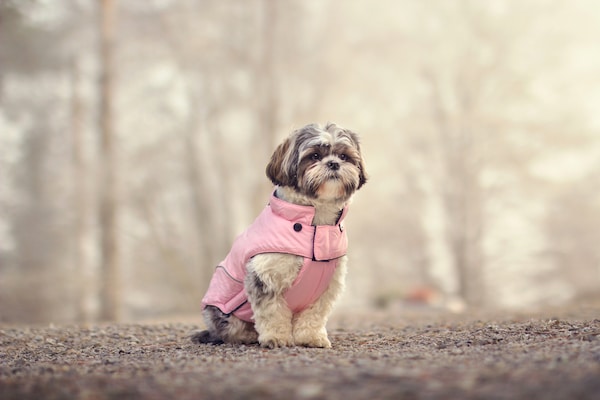
elenasendler via iStock
On the other hand, dogs who might want to pass on a winter coat include:
- Dogs with thick double-coats
- Clothing-averse dogs
- Dogs who stay mostly indoors in the winter—with just quick potty breaks to stretch their legs
If your pooch isn’t a fan of winter clothing, try limiting their outdoor time during the coldest days of the year. They may also like snuggling up to a dog-approved heated blanket, or heated dog bed instead—and of course, their favorite human!
How We Chose
The winter coats featured here were selected based on a comprehensive look at customer feedback across a wide variety of retail platforms and an interview with veterinarian Chyrle Bonk, DVM. We prioritized winter gear with effective insulation, waterproof materials, and a range of sizes to fit all kinds of dogs. Additionally, we considered the various needs of different breeds and pet parent lifestyles.
We’re also guided by the experience of living and playing alongside our own much-loved and strongly opinionated dogs, who are never stingy with their feedback.
Further Reading:
- The Best Winter Dog Clothes to Keep Your Dog Bundled and Warm
- The 15 Best Dog Shoes and Boots for Snow, Hiking, Hot Pavement, and More
- 13 Dry and Cozy Dog Raincoats for Wet Walks
- Running With Your Dog: A Winter Guide
- How to Go Snowshoeing With Dogs
- Skijoring is the Best Winter Dog Sport You’ve Never Heard of (and Should Try!)
